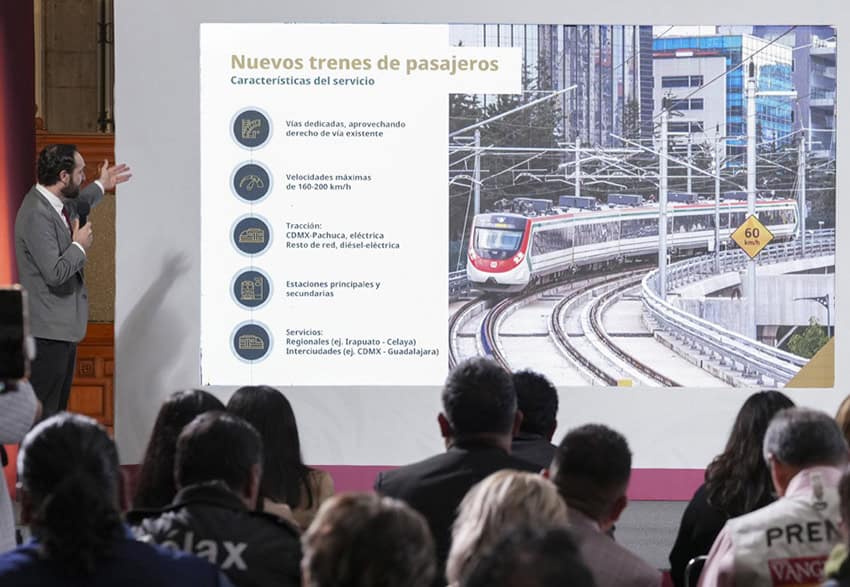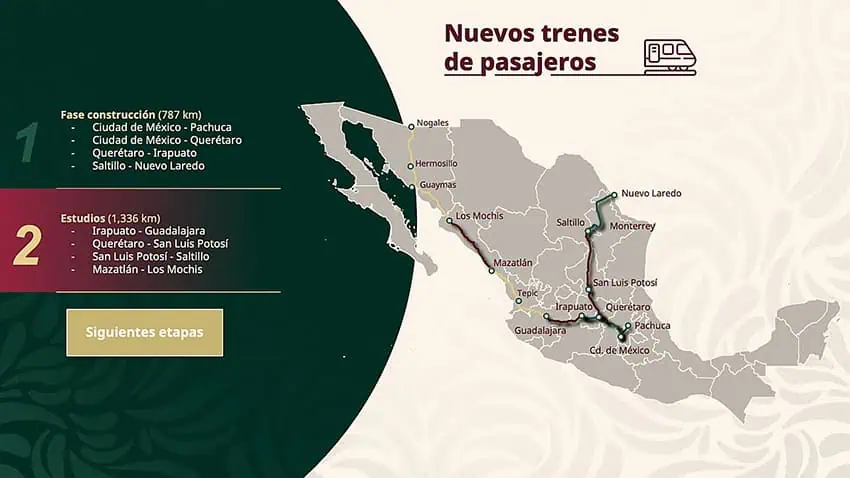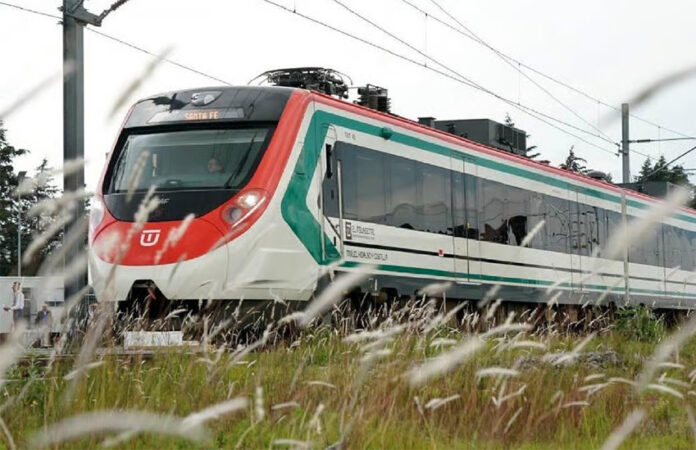President Claudia Sheinbaum’s ambitious railroad plans will get under way in earnest this month with construction beginning on sections of two trunk lines: one connecting Querétaro to Irapuato and another from Saltillo to the U.S. border via Monterrey.
Contract bidding for three other tranches and the provision of more than 60 trains is well advanced, and studies are underway for new lines connection to Guadalajara, San Luis Potosí, Mazatlán and more.

Sheinbaum opened her Wednesday morning press conference by introducing the three men responsible for meeting an ambitious goal: that of building more than 3,000 kilometers of railway track for passenger trains before her term ends in 2030.
Andrés Lajous, director of Mexico’s Rail Transport Regulatory Agency (ARTF), provided a brief update on progress on the Mexico City-Querétaro and Mexico City-Pachuca lines, before turning his attention to the Querétaro-Irapuato line, construction of which is expected to begin this month.
Lajous said the Querétaro-Irapuato line will be built in two sections: from Querétaro to Apaseo el Grande (a distance of 33 km) and from Apaseo el Grande to Irapuato (78 km). Construction contracts will be announced in mid-August and October respectively.
The Mexico City-Querétaro and Querétaro-Irapuato lines are tranches of the Mexico City-Guadalajara-Nogales line that aims to serve 6 million passengers a year upon completion.

Another section of track that could see construction begin this month is the Unión San Javier to Arroyo El Sauz tranche of the Saltillo-Monterrey-Nuevo Laredo train. The winning bid for this 100-kilometer section in the northern state of Nuevo León will be announced this month.
With regards to the remainder of the Saltillo-to-Nuevo Laredo line, the Saltillo-Santa Catarina section (70 km) tender will be published on Sept. 18 and the Arroyo El Sauz-Nuevo Laredo tranche (133 km) will be determined on Oct. 3.
Larous said that four other lines — Irapuato to Guadalajara; Querétaro to San Luis Potosí; San Luis Potosí to Saltillo and Mazatlán to Los Mochis — are entering the study phase. The call for proposals for environmental assessments was published on Wednesday.
Also this month, the ARTF will award contracts for trains for three lines: Mexico City-Pachuca, Mexico City-Irapuato and Saltillo-Nuevo Laredo.
General Gustavo Ricardo Vallejo, commander of the Army engineers overseeing the construction of the Mexico City-Pachuca line, said construction there will generate more than 60,000 direct and indirect jobs.
“There are already 6,000 people employed in building embankments, compacting track platforms, excavation and pouring of piles and foundation footings,” he said.
Additionally, Vallejo said, the Mexico City-Querétaro job is expected to create employment for roughly 200,000 people. More than 5,000 people have already found jobs on this route.
En la #MañaneraDelPueblo de hoy, con la Presidenta @Claudiashein, compartimos el avance de construcción de los nuevos trenes de pasajeros🚊:
✅En agosto, inician las obras de las rutas Querétaro-Irapuato y Saltillo Nuevo-Laredo.
✅Arrancamos los estudios para las nuevas rutas. pic.twitter.com/eG7NTfQUP7
— Andrés Lajous (@andreslajous) July 30, 2025
Sheinbaum interjected that her passenger railway project has two purposes — better communication across the country and economic benefits for the communities along the routes.
“The objective … is to benefit communities during and after construction, not just provide a means of transportation,” she said, adding that another goal is to ensure safe, rapid and high-quality transportation.
Infrastructure, Communications and Transportation Minister Jesús Esteva was also present, but his comments were limited to progress on the Amado Nervo Bridge that will connect the Pacific Coast resort cities of Puerto Vallarta, Jalisco, and Bahía de Banderas, Nayarit. The bridge is scheduled to be completed in November 2026.
